Think Greece, and pictures of whitewashed houses with blue windows will immediately come to mind. Have you ever wondered why buildings in the Cyclades are painted blue and white though? Read on to find out more!
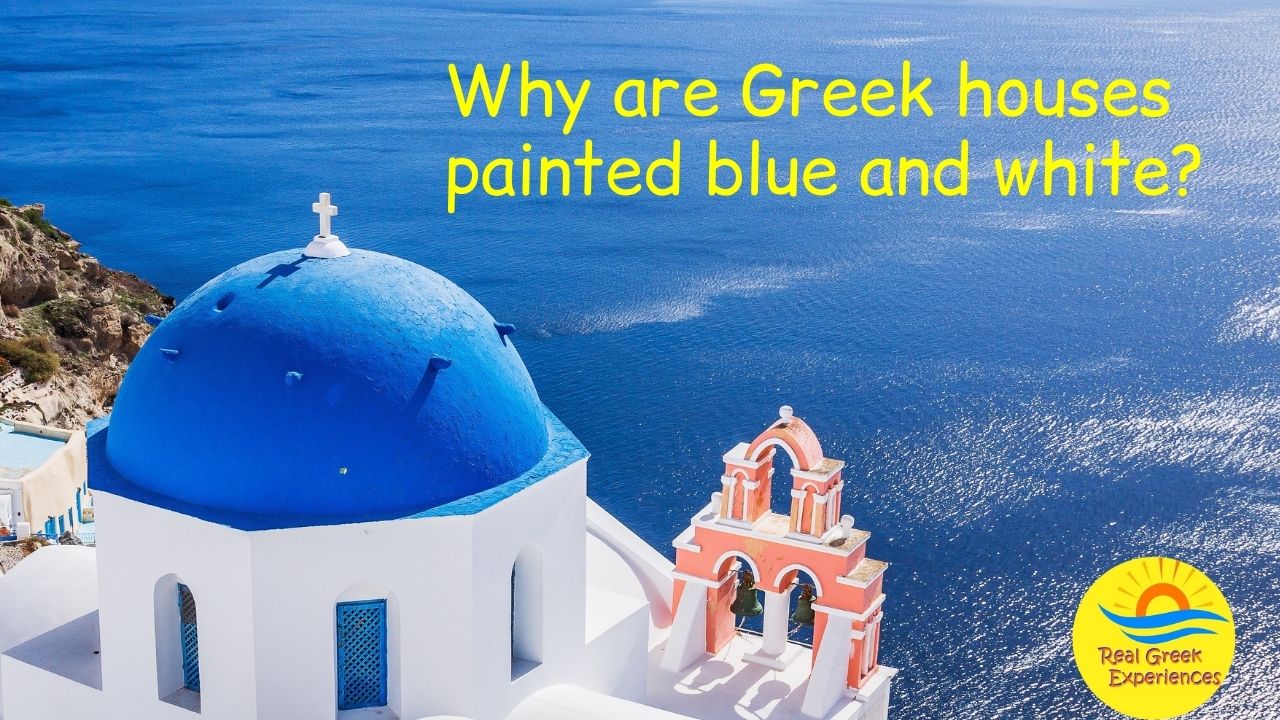
Why are buildings in the Cyclades painted blue and white?
You’ve probably seen photos of the famous Santorini in Greece, with the white-washed, blue-domed churches.
So what is it with the white and blue? You might think it’s because these two colors match the Greek flag, the azure sky, the blue sea and the white waves.
However, the real reason behind this Cycladic architecture color scheme wasn’t exactly a decision based on aesthetics. In fact, the reason is a lot more mundane. Read on to find out more!
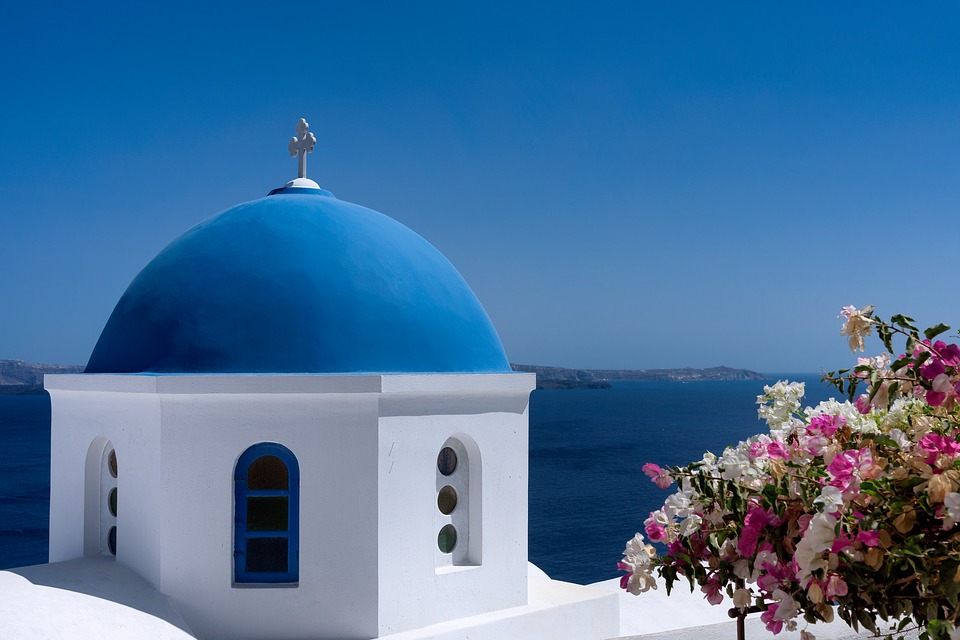
The reason why buildings are blue and white in Greece
Between 1936 and 1941, Greece was under the rule of Dictator Ioannis Metaxas. In 1938, Metaxas issued a decree concerning many aspects of everyday life.
Among others, this decree aimed to increase sanitation and cleanliness in the most isolated areas of the country. This included the Cyclades islands, as well as the Dodecanese. At the time, endemic diseases, like cholera or tuberculosis, were very common.
To stop the spread of diseases, buildings were whitewashed with the material known as lime, or slaked lime. This cheap and easily accessible natural substance had been used as a powerful disinfectant for thousands of years.
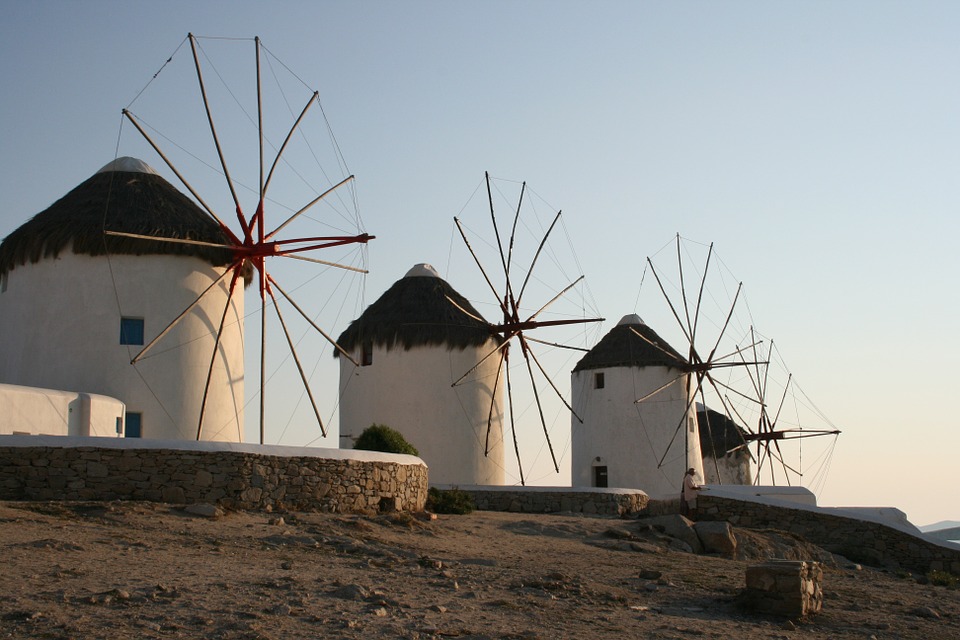
Since the white-washing was established, the islanders kept using lime to paint their houses. The bright white color helped reflect the sunlight and cool down the indoors temperatures.
There was also another reason though – the pure, dazzling white was an uplifting color during the times of war and misery that Greece went through during WWII.
How did this blue and white become so popular?
It appears that the blue and white color scheme became popular because of Queen Frederica of Hanover.
This German Queen was the wife of King Paul the First, who ruled Greece from 1947 onwards. She was a controversial and rather unpopular figure, often targeted because of her German heritage.
In 1954, Queen Frederica organized a cruise around the Aegean Sea. The participants were members of royal families and other important people of the times, and they were awe-struck by the wild beauty of the Cycladic islands.
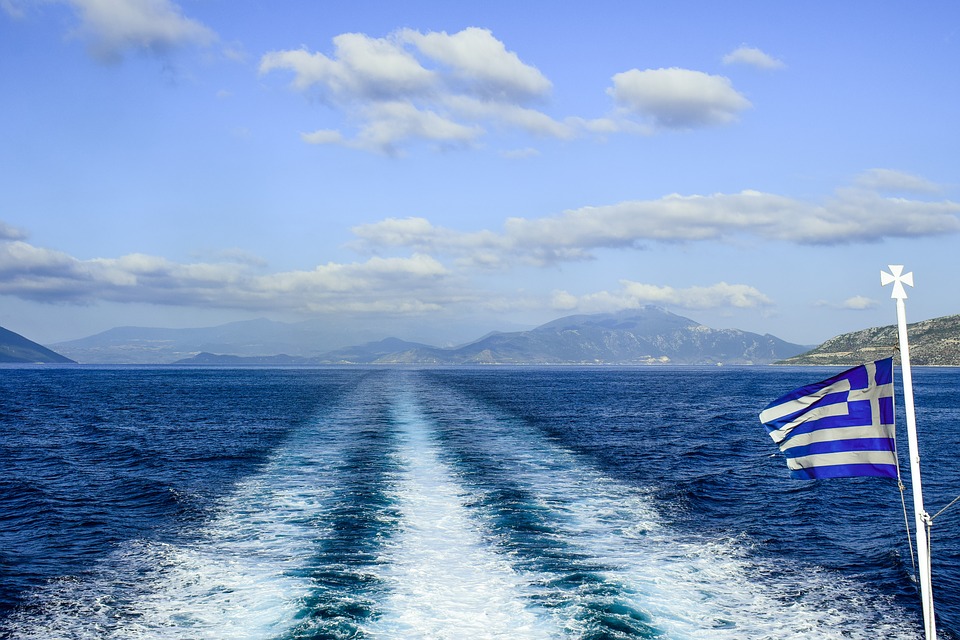
A year later, Frederica approached the newly appointed Prime Minister Konstantinos Karamanlis. She showed him photos of some white-washed houses in Mykonos, and suggested that it would be great advertising for Greece.
She couldn’t be more right! Mykonos became one of the trendiest destinations of the 1960s and 1970s. Famous jetsetters, such as Grace Kelly and Jackie O, visited the remote island, and its popularity started soaring – and the legend lives on.

Even today, the white Cycladic houses are a trademark of Greece. Several accent colors are used for contrast, blue being the most common one.
And what about the windows and domes? Why are they blue?
In fact, the Cycladic house shutters aren’t always blue, although it tends to be one of the most common colors. If you go around the Cycladic islands, you will see shutters and other wooden surfaces painted in many different colors.
Traditionally, the fishermen would paint their homes’ shutters in whatever color was left over after they had finished repainting their boat.
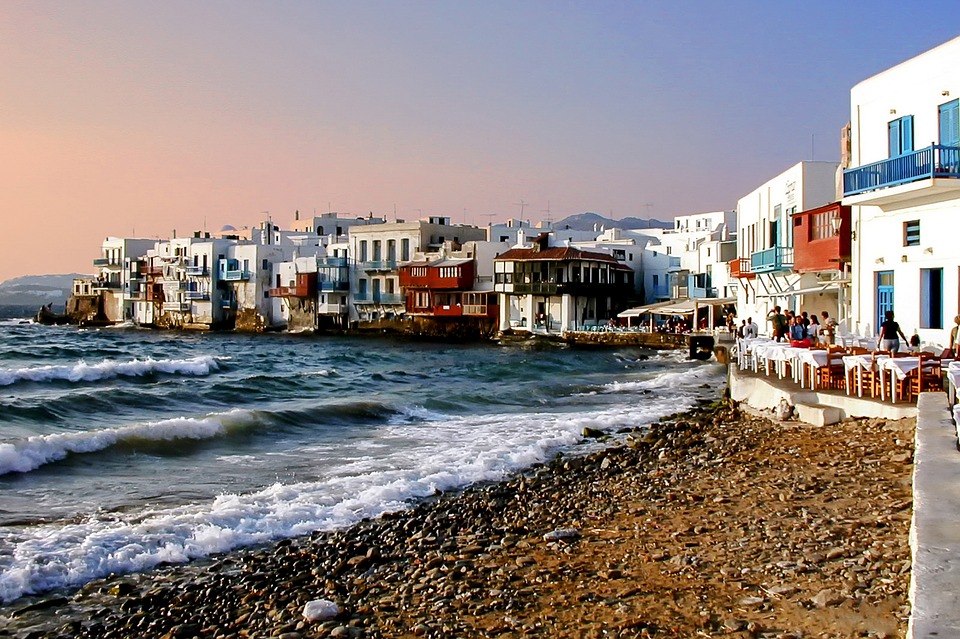
It appears that the “blue paint” idea was passed either by Metaxas in the late 1930s, or most likely by the military dictatorship of the 1960s. There were times in Greece’s recent history when a radically different color, like red, indicated a communist ideology.
Along with white, the color blue became the symbol of the nation. After all, blue and white are the colors of the Greek flag.
Were the Cycladic houses always white?
Not at all! The Cycladic houses were traditionally made of stone, which was the material most readily available all over Greece.
During the centuries when pirates roamed the Aegean Sea, the houses were largely left unpainted, thus blending into the landscape.

Later on, and until the late 1930s, many houses were painted in different colors. Yellow ochre, earth red, Egyptian blue and black were widely used, much like in other areas of the country.
The materials used were all made from natural sources, and the textures were very different to those of contemporary paints. A great example of the use of these colors is in the Ancient Palace of Knossos in Crete.
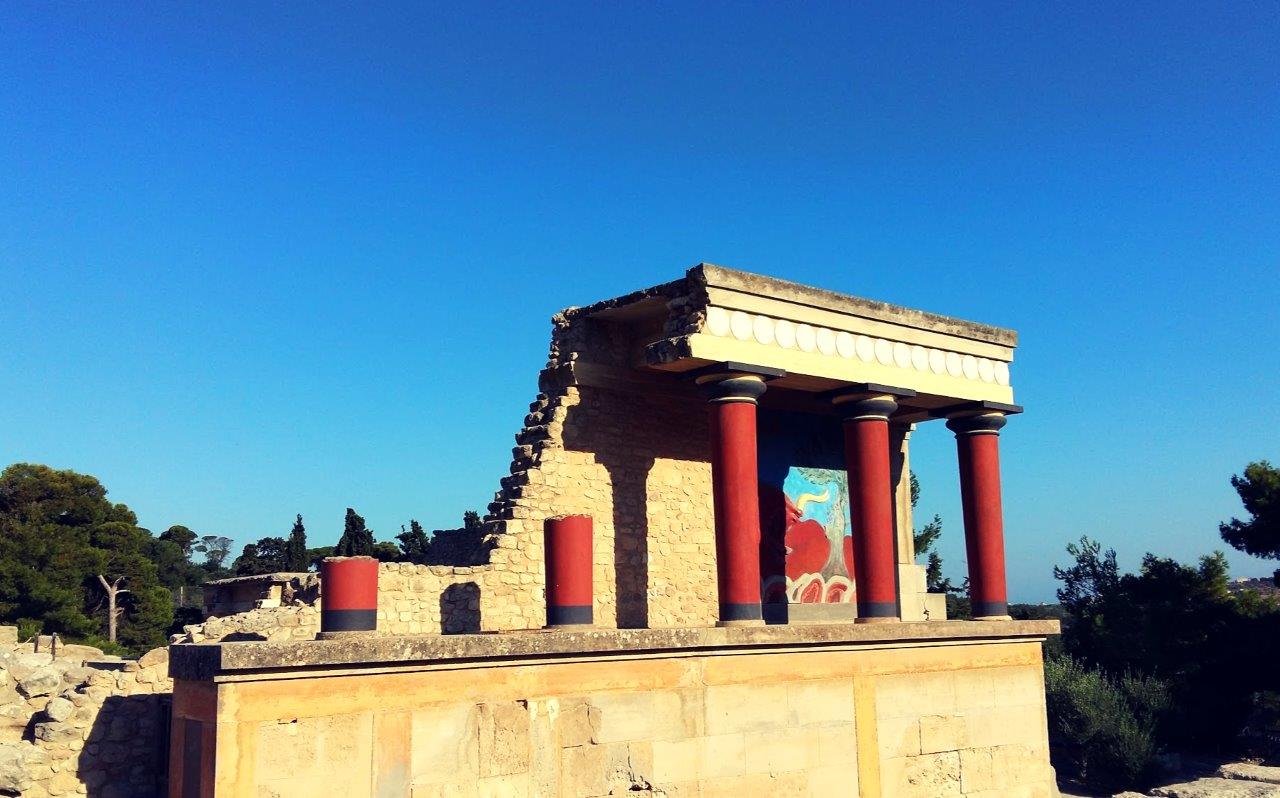
These days, the natural grey-beige color of stone is still a very common architectural feature in several parts of Greece, especially up on the mountains.
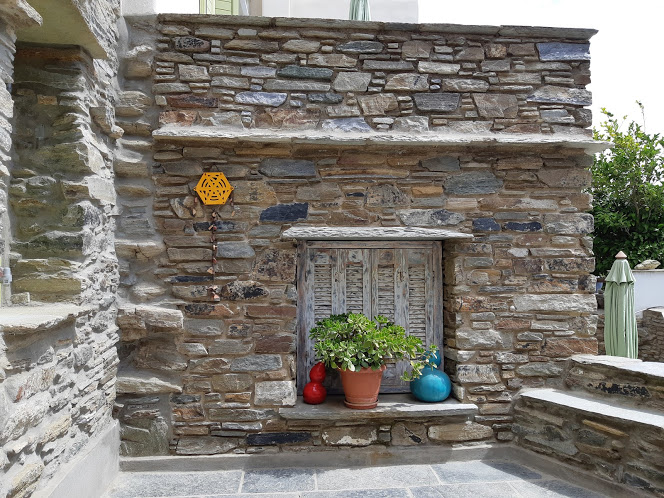
As for the Cyclades, it has actually been suggested that the blue-and-white architecture should be abandoned.
Experts in the field of architecture and heritage preservation are keen on the revival of the original multi-colored style, or the more original natural stone color. The white-washing is no longer being enforced by law.
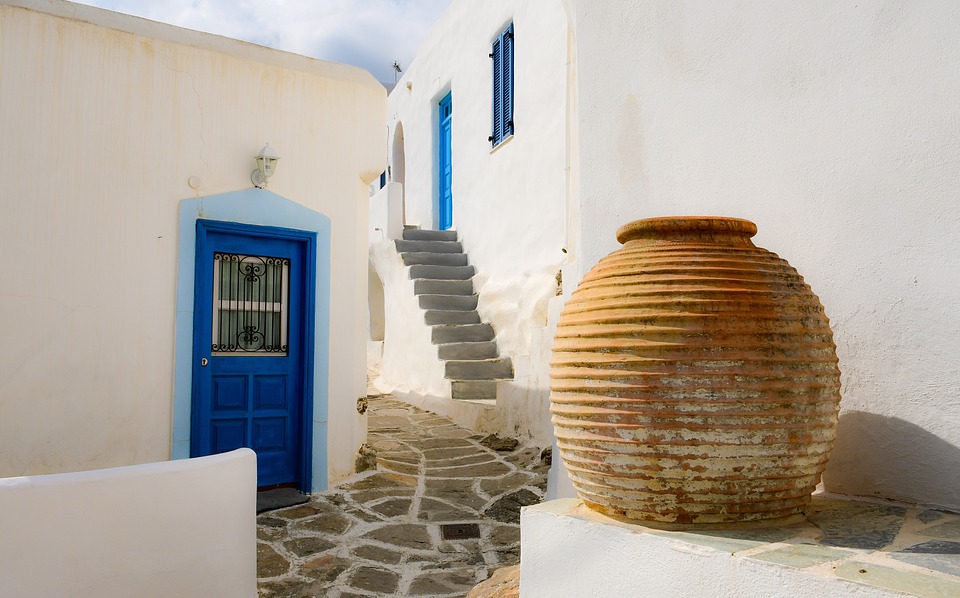
But could you imagine the famous Santorini church with the blue dome being anything apart from white and blue? I definitely can’t!
Fun fact!
Confusingly, the Greek word for lime is “asvestis”, that can easily be confused with the poisonous material known as asbestos.
Don’t worry though. They may sound similar, but if you hear a Greek calling the white material asbestos, you will know that they are in fact referring to lime.
So there you have it, the reasons why white and blue buildings are common in Santorini and the Cycladic islands!
How to get to the Cyclades – Ferry tickets to the Greek islands
Some of the Cyclades islands, like Mykonos and Santorini, have international airports. In summer, you can fly there directly from many European airports.
Other islands have domestic airports, where you can fly to from Athens.
However, many of the Greek islands are only accessible by ferry. Many visitors fly into Athens, and then take an onward ferry from Piraeus port, which is only a half hour out of central Athens.
You can check ferry routes to all the Greek islands and book your ferry tickets on two very convenient search engines, Ferryscanner or Ferryhopper.
Have a look at my guide on 26 Greek islands with an airport, which will help you plan your Greek island trip.
FAQs about the Greek island houses
Here are a few quick answers to frequently asked questions about Greek island architecture:
Why are Greek houses painted blue and white?
The houses on some Greek islands were originally painted white with limestone. Apart from having antibacterial properties, this was the cheapest paint color available at the time! Windows and doors are painted in bright blue shades, but also other colors, for contrast.
Which Greek island has blue and white buildings?
The blue and white colors are typical of the Cyclades islands, like Santorini, Mykonos, Paros, Milos and Naxos. Almost all the buildings on these islands have white walls. Blue color is used for doors and windows, though you can often see other bright colors like red or green.
Where in Greece can I see the famous white churches with blue domes?
You will see many white churches with blue domes, as well as plenty of white houses, on most of the Cyclades islands, in the Aegean Sea. It’s not only Santorini island!
Which Greek island is the prettiest?
Every Greek island offers beautiful scenery! Santorini, Milos, Rhodes, Crete and Corfu are among the prettiest islands in Greece.
Which island in Greece has the most beautiful beaches?
Some of the Greek islands with the best beaches are Crete, Rhodes, Kos, Ios, Mykonos, Naxos, Lefkada, Kefalonia, Skiathos… and the list goes on and on!
More Greece guides
Looking for more insightful guides to Greek culture and life? Check out these Greek blog posts:
- A local’s guide to ordering Greek food in Greece
- An introduction to the Greek islands
- Cheapest time to go to Greece – Best Times To Visit
- How to experience Greece from A to Z
- Greek Easter Traditions – Greek Orthodox Easter Food and Customs
- Greek Customs and Habits That Make Greeks Who They Are
- Coffee in Greece
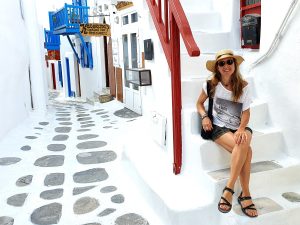
Hi! I am Vanessa from Athens, and I absolutely love the Cycladic architecture. If you can read Greek, have a look at this article too. Follow me on my social media:
- Facebook page and very active Facebook group
- Amazon
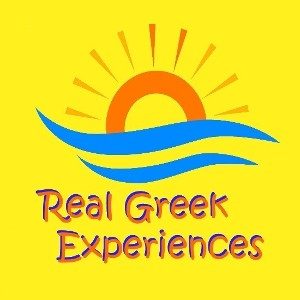
Hi,
I would like to congratulate you on the amazing article. Really a great work you have done. I have been travelling for more then 15 years in Greece, but I did not know that. Thank you so much!
Glad you enjoyed it!
I always thought that the white was for the brightness of the sun and the blue for the sea and the sky! After reading your excellent article I understood the “philosophy” behind it, especially for the white!!! Thank you for the information and the nice presentation!!!
Was the limestone plaster naturally that white or do they add something to it to achieve the stark white. Very interesting article!
To the best of my knowledge, limestone can actually be whiter, or brighter, than modern day’s paints! It’s a natural material and has been used for thousands of years. I’ve read that they even used it for the pyramids in Egypt, and the palace of Knossos!
Haha, what a timely article Vanessa. As you know my wife and I are in Greece for 3 months from Tasmania and we actually researched the white/blue house colour the other day; having seen many many here on Paros and beyond. In Athens next Friday and will try and catch up as previously discussed. Have read your 3 days in Athens itinerary – sounds perfect for us. By the way, am guessing you know Dave of Dave’s Travel Pages – read his article on the Cave on Antiparos and went there the other day😀😀